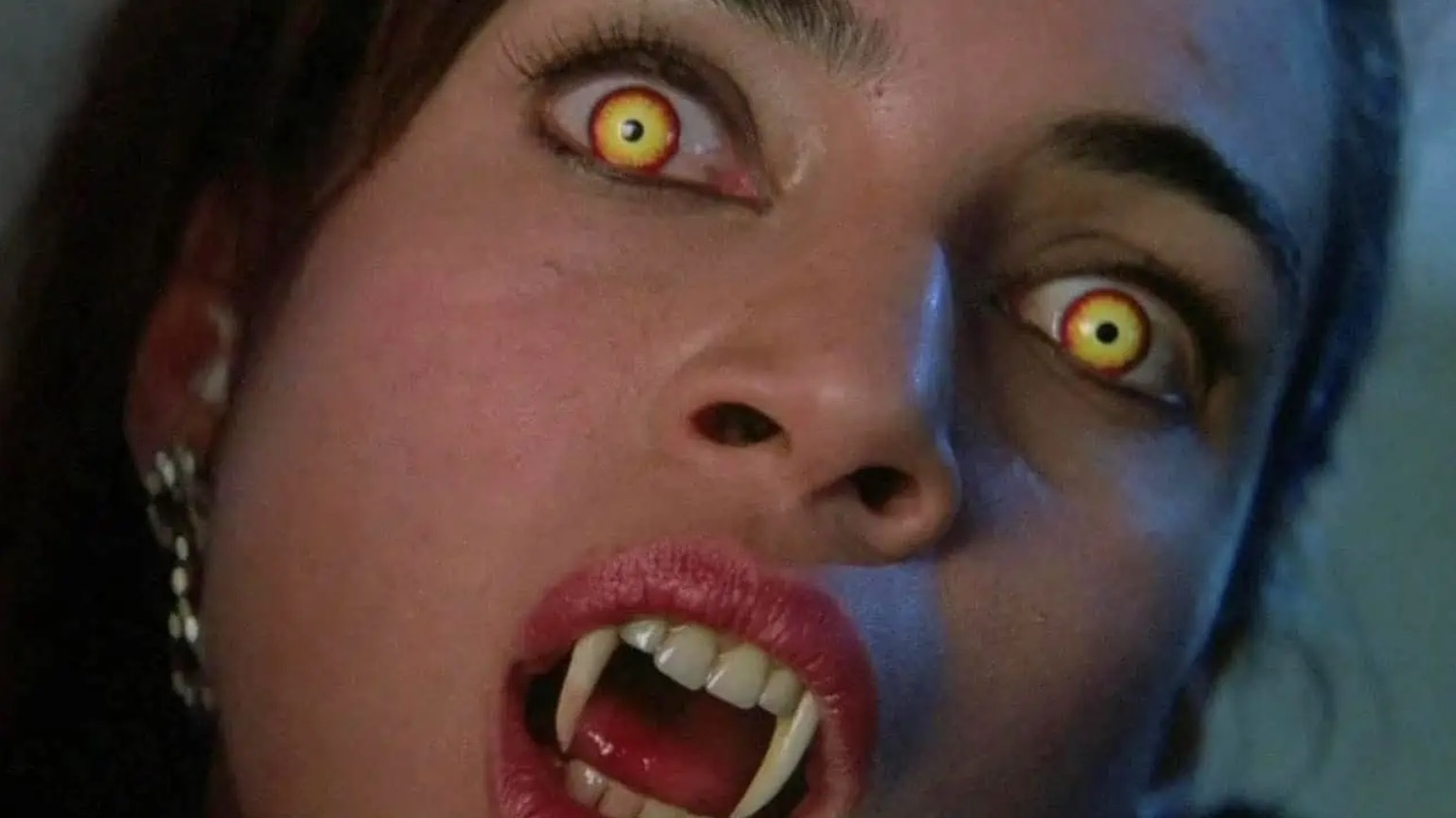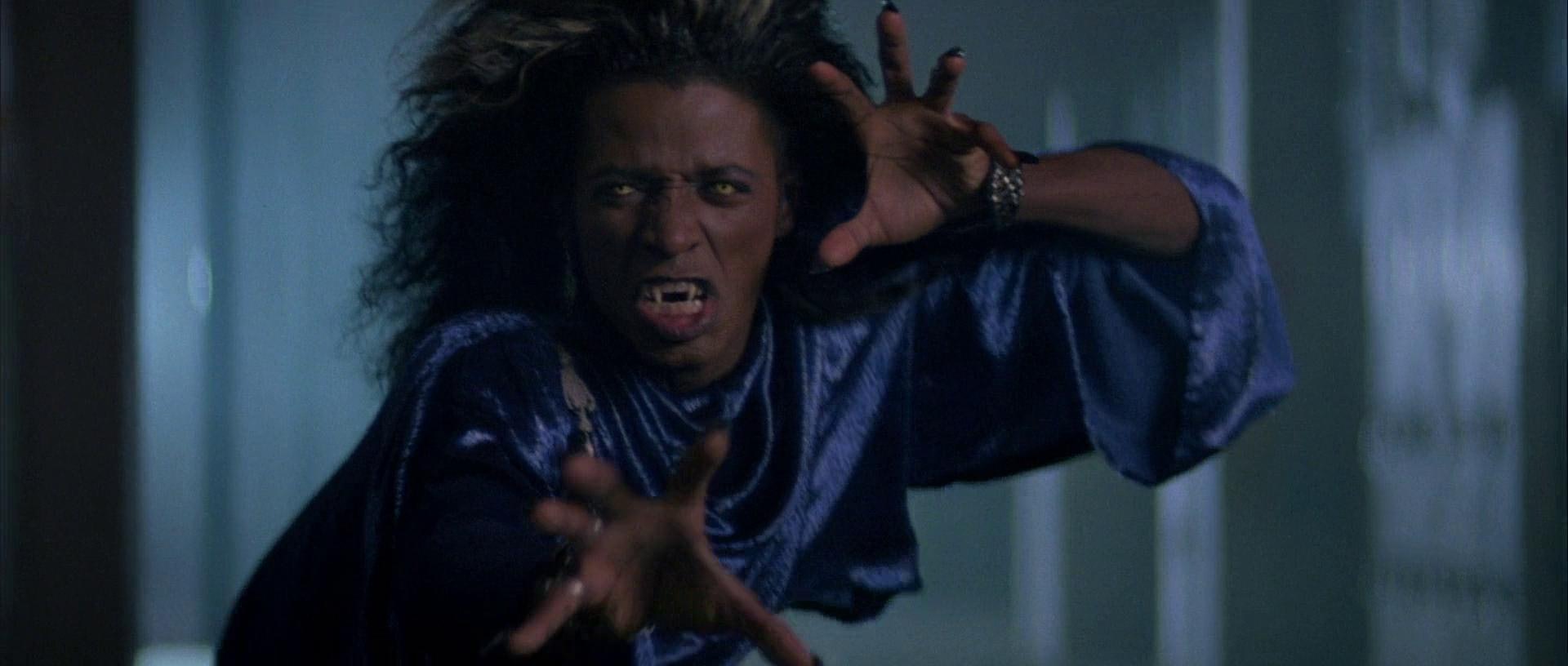
The original Fright Night grossed nearly $25 million in the summer of 1985, an impressive figure for a horror movie only surpassed that year by the second outing of Freddy Kreuger. You’d expect its 1989 sequel to be something of a big deal, but thanks to various behind-the-scenes problems, it slipped so far under the radar that many fans weren’t even aware of its existence.
The franchise’s slide into obscurity began when Columbia Pictures apparently decided that Oscar bait, rather than schlocky horror comedies whose only accolades came from the Saturn Awards, should be their forte. New Century/Vista took up the mantle instead, but as a much smaller company, it had to slash both its production and distribution budget: Fright Night Part 2 opened on just 148 screens, explaining why its box office haul was only a tenth of its predecessor.
Things took a tragic turn when studio boss José Menéndez and wife Mary Louise were murdered by their own sons, a nation-gripping crime that spawned multiple TV movies. Part 2 got stuck in licensing hell during the hasty corporate restructuring that followed, trickling out on VHS and later a low-quality DVD that quickly went out of print. By this point, Elm Street had spawned five direct sequels, a super-meta standalone, and a mash-up with Friday the 13th.
Part 2 suggests Fright Night could have sustained a similarly prolific run, as it once again pulled off a tricky balancing act of ghoulish comedy and gruesome practical effects while further developing its lore with an almost entirely new cast of heroes and villains. With original leading bloodsucker Chris Sarandon and director Tom Holland both busy on the first Child’s Play, love interest Amanda Bearse signed up to Married... with Children and best friend Stephen Geoffreys reportedly unhappy with the script, Roddy McDowall’s vampire hunter-turned-TV host Peter Vincent and William Ragsdale’s terrorized teen Charley Brewster were the only returnees.

While Sarandon’s Jerry Dandridge is still sorely missed, his replacement threats are arguably even more entertaining. His vengeful sister Regine (Julie Carmen) is especially memorable as a femme fatale performance artist who uses her alluring moves to mesmerize her prey and can transform into a bat, but the members of her motley crew (Jon Gries’ creepy werewolf Louie, Russell Clark’s androgynous mute Belle, and Brian Thompson’s grunting muscle man Bozworth), are all good fun too.
Traci Lind’s Alex Young is certainly an upgrade from Charley’s previous girlfriend. While Bearse was required to do little more than play the damsel in distress, Lind, wisely given much more agency, gets the chance to play the heroine. She essentially saves the day, first by dispatching the vampire posing as a therapist and then assuming his identity to rescue Charley before he’s turned to the dark side for good. The makers of 1991’s Buffy the Vampire Slayer appear to have erred by casting Kristy Swanson instead.
Before being pierced through the heart with a wooden stake, therapist Dr. Harrison (Ernie Sabella) also plays a pivotal role. After handily recapping past events using the “previously on” device for those who’d missed or forgotten the original, Harrison continues to convince Charley that Jerry was a serial murderer essentially cosplaying as Dracula for effect. It’s a stretch, especially since that doesn’t explain all the supernatural occurrences, but it helps sell the ensuing struggle between fantasy and reality.

In fact, Charley spends most of Part 2 in an existential crisis. Did he really see Regine sink her teeth into friend Richie (Merritt Butrick) through her bedroom window? Or did his lack of bite marks back up the villainess’ defense that it was all just amateur dramatics? Did she really body swap with Alex during their makeout session? Or was she just a vision that proved Regine had got under her skin? The movie has fun toying with both Charley’s state of mind and the audience’s as the lines between his human and vampiric selves blur.
In fact, the entire movie is a hoot, from the stylish MTV-friendly visuals and pure comic relief (the bowling alley scene where Louie uses a severed head as a ball is particularly inspired) to the Harryhausen-inspired visual effects and campy dialog. Part 2 also serves up plenty of outlandish blood and gore, particularly in the hell-for-leather finale when the vampire gang gets their comeuppance: see the mountain of bugs that protrude from Bozworth’s corpse and the horrific meltings that reduce Belle and Regine’s skeletons to mush in eye-popping detail. Director Tommy Lee Wallace, best known for helming another unfancied sequel, Halloween III: Season of the Witch, might not have had much money at his disposal, but he sure used it effectively.
The Fright Night concept did experience a brief revival more than two decades later. Experiencing similar fortunes, the Colin Farrell-starring first installment enjoyed a wide theatrical run and modest box office success, while the Colin Farrell-less sequel New Blood went straight to DVD. But even if few at the time were able to compare them, neither held a candle to the original and follow-up lost classic that came before.







